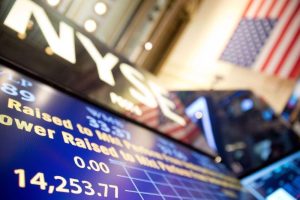Alătură-te comunității noastre!
Vezi cele mai recente știri & informații din piața de capital


In a week marked by subtle shifts and burgeoning optimism in the U.S. market, stocks took a slight step back from their record-breaking highs, driven by a revived manufacturing sector that hinted at economic resilience.
Last week’s movements in the stock market were nuanced, with the larger-cap indexes slightly retreating as U.S. Treasury yields edged higher, responding to an invigorated manufacturing landscape.
This sector’s revival, possibly indicating a broader economic upswing, has caught the market’s eye, particularly as the large-cap stocks showed more resilience compared to their smaller counterparts.
Notably, energy stocks shone brightly, buoyed by climbing oil prices amidst geopolitical tensions and production decisions by major exporters. The technology sector also saw a lift, thanks in part to a surge in Microsoft’s performance towards the week’s end.
The U.S. manufacturing sector’s pulse, as measured by the Institute for Supply Management (ISM), seemed to influence market sentiments significantly.
An unexpected uplift in the March ISM manufacturing index hinted at expansion, the first in over a year, albeit slight. This resurgence was accompanied by a noticeable rise in input prices, stirring concerns about inflationary pressures.
In contrast, the service sector presented a more comforting picture, with price pressures easing to levels not seen since the onset of the pandemic, sparking hope for a potential Federal Reserve rate cut in the near future.
Furthermore, a robust jobs report added to the optimism, showcasing substantial job additions without exerting undue pressure on wages, an encouraging sign for those monitoring inflation closely.
Across the Atlantic, the European market experienced a dip, breaking a streak of consistent gains amidst a complex backdrop of hawkish U.S. Federal Reserve signals and escalating oil prices.
The pan-European STOXX Europe 600 Index saw a decline, reflecting a cautious sentiment across major European bourses. France, Germany, and Italy’s key indexes all trended downwards, albeit at varied intensities, underscoring the pervasive uncertainty.
Despite these setbacks, the eurozone presented a mixed bag of economic signals. A notable deceleration in inflation and a slight uptick in the composite purchasing managers’ index (PMI) suggested an economy teetering on the brink of recovery after a period of stagnation. The European Central Bank (ECB) echoed a cautious optimism, indicating a shift towards a more accommodative monetary policy, contingent on forthcoming economic data.
Beyond these traditional economic powerhouses, the global market landscape was textured with developments from Japan to China. Japan grappled with its own set of challenges, from geopolitical strains to domestic monetary policy considerations, with the Bank of Japan (BoJ) hinting at potential interventions to counteract the yen’s weakness.
Meanwhile, China’s markets, though operating on a shortened week due to the Qingming Festival, painted a picture of tentative recovery.
Manufacturing and non-manufacturing PMIs in China pointed towards a rejuvenation, stirring hopes for a turnaround in the world’s second-largest economy. However, the shadow of a persistent property market slump loomed, hinting at underlying vulnerabilities that could temper the optimism about China’s economic revival.
In summary, from the tentative revival in U.S. manufacturing to the cautious optimism in Europe and the nuanced recovery signals from Asia, the market dynamics reflected a complex interplay of economic indicators, policy decisions, and geopolitical developments.
As investors and policymakers alike navigate this intricate landscape, the coming weeks promise to shed further light on the direction of the global economy amidst these unfolding narratives.
Author Bas Kooijman is the CEO and Asset Manager of DHF Capital S.A









Vezi cele mai recente știri & informații din piața de capital